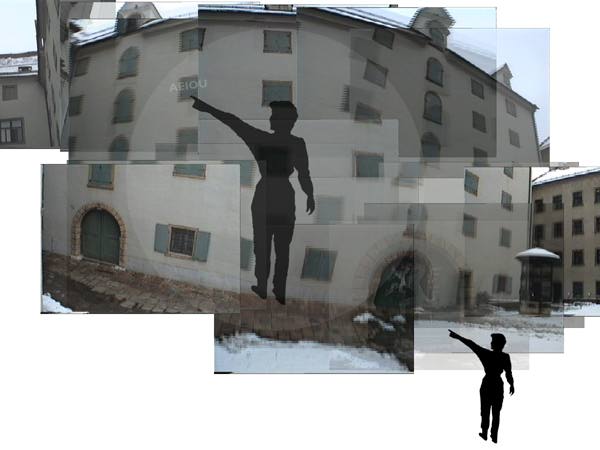
Texts on relational architecture can be found at http://www.lozano-hemmer.com
(Definition:)
Relational architecture can be defined as the technological actualisation of buildings and public spaces with alien memory. Relational architecture transforms the master narratives of a specific building by adding and subtracting audiovisual elements to affect it, effect it and re-contextualize it. Relational buildings have audience-activated hyperlinks to predetermined spatiotemporal settings that may include other buildings, other political or aesthetic contexts, other histories, or other physics.
(Differences between virtual and relational architecture:)
Virtual architecture could be differentiated from relational architecture in that the former is based on simulation while the latter is based on dissimulation. Virtual buildings are data constructs that strive for realism, asking the participant to "suspend disbelief" and "play along" with the environment; relational buildings, on the other hand, are real buildings pretending to be something other than themselves, masquerading as that which they might become, asking participants to "suspend faith" and probe, interact and experiment with the false construct. Virtual architecture tends to miniaturize buildings to the participant's scale, for example through VR peripherals such as HMDs or CAVEs, while relational architecture amplifies the participant to the building's scale, or emphasizes the relationship between urban and personal scale. In this sense, virtual architecture dematerializes the body, while relational architecture dematerializes the environment.
(Similarities between virtual and relational architecture:)
Virtual and relational architectures are not opposing practices, nor are they mutually exclusive. They are similar in that both are largely participant-centered, computer generated, and less expensive, permanent, sheltering and territorial than physical architecture.
(Buildings with subtitles:)
Relational architecture need not be inscribed within postmodern parasitic or symbiotic practice nor post-structural self-referentiality: it is not necessarily engaged in deconstruction, nor does it need to use the language or structure of the building itself. Instead, relational architecture events could be considered "buildings with subtitles", where the translators may or may not speak the building's language: the subtitles need not be causal, referential, or even contextual. Relational architecture pieces vindicate their synthetic, artificial qualities, and reserve the right to be effectist, improvisational and useless.
(Search for behaviour:)
But apart from special effects, beyond plasticity, the real motivation behind relational architecture is the modification of existing behaviour: the artist creates a situation where the building, the urban context and the participants relate in new, "alien" ways. The piece can be considered successful if the artist's intervention actively modifies the point of dynamic equilibrium between the public's actions and the building's reactions, and vice versa. There can be a variety of causal, chaotic, telepresent, predetermined, or emergent behaviours programmed into the piece and the uncertainty of the outcome is one of the main motivations for doing such a piece.
(Precedents:)
Although relational architecture is a relatively new field within media arts, precedents to the concept date back to ancient Greece (Simonides' discovery of mnemonics), and to the use of the Art of Memory in Chinese, Hermetic and Renaissance rhetoric traditions. In those traditions architecture was used as a repository of relatively-located memories which could be recalled by a speaker through a mental "walkthrough". Contemporary practices of site-specific installation, street performance and public art have been of paramount importance in the development of the field. A significant number of artists can be said to have been, and continue to be, influential in the practice, among them Krzysztof Wodiczko, Archigram, Toyo Ito, Gordon Matta-Clark, Jenny Holzer, the Situationists, Christian Moeller, Christo, Peter Greenaway, Vito Acconci, Dennis Adams, Knowbotic Research, Dan Graham, Richard Serra and Rachel Whiteread.
Rafael Lozano-Hemmer and Will Bauer are collaborating in the development of a series of relational architecture pieces to be presented over the next few years. The pieces entail the development of novel architectural interfaces using real-time computer graphics, 3D sensors, electro-acoustic music and robotic lights. The events, which will take place after dusk, will be presented in half a dozen cities including Linz, Graz, Madrid and Mexico City.
main | scourges | repository | participants | relational architecture | bios